---------------- Old San Juan & Virgin Islands, 1979 ----------------
Index Return to Trips---------------- Old San Juan, Puerto Rico ----------------
The El Convento Hotel, formerly a 1600's Carmelite Convent, today it's a lovely first rate hotel on Calle Cristo.
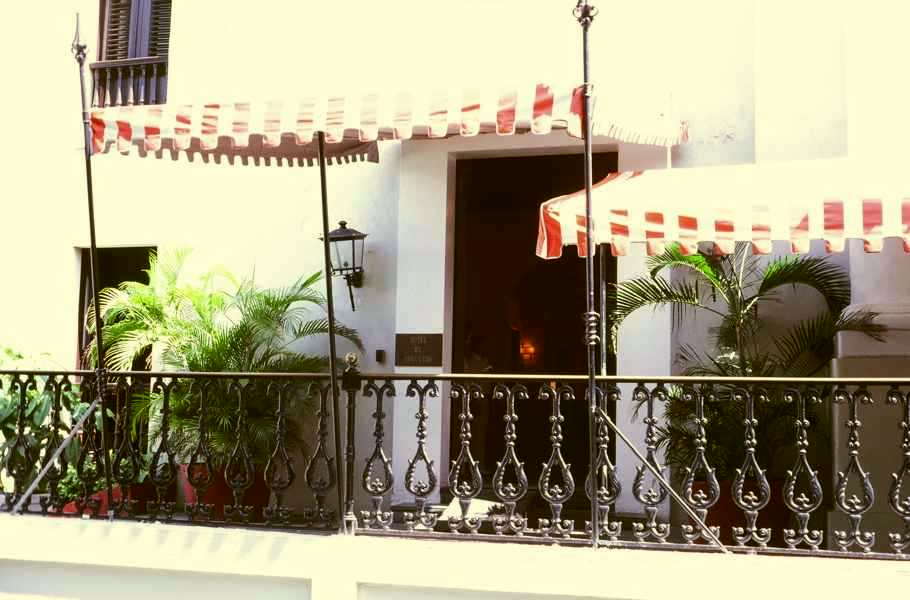

We were intrigued with the design of the headboard in our room.

La Fortaleza, or Governor's Mansion, was built on a hill overlooking the harbor in 1540 and it is the oldest executive mansion in continuous use in the Western Hemisphere.
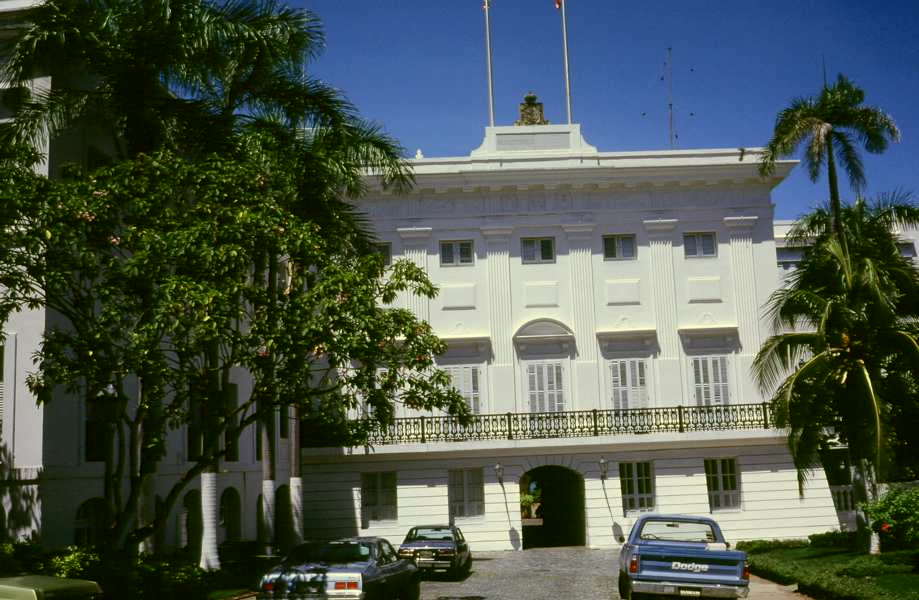
Cathedral de San Juan, considered by some to be an authentic and rare New World example of medieval architecture, dates back to a thatch-topped wooden structure from the early 1500's. Several renovations have occurred over the years, the last one as recently as 1917. The cathedral contains the marble tomb of the island's first governor, Juan Ponce de Leon.
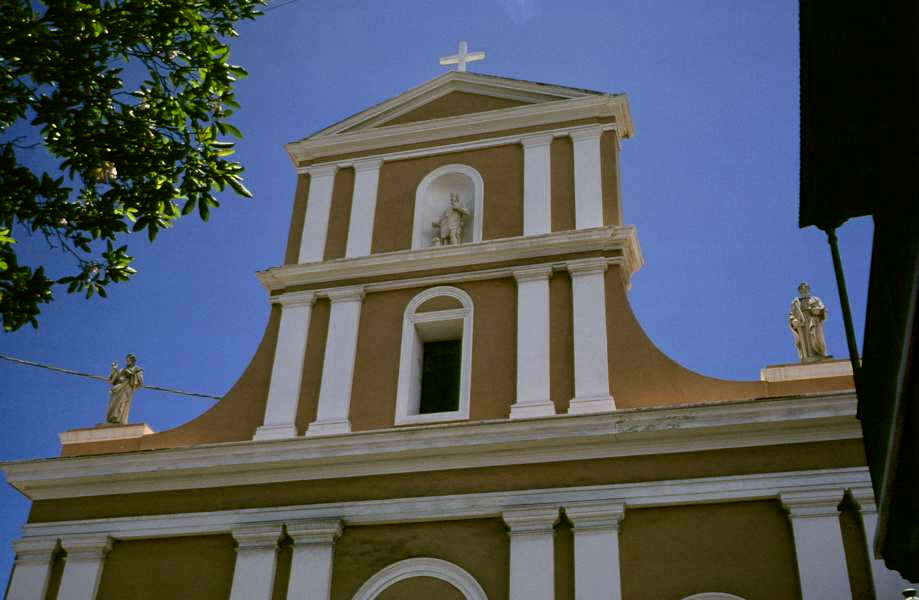

La Fortaleza, or Governor's Mansion, was built on a hill overlooking the harbor in 1540 and it is the oldest executive mansion in continuous use in the Western Hemisphere.

Cathedral de San Juan, considered by some to be an authentic and rare New World example of medieval architecture, dates back to a thatch-topped wooden structure from the early 1500's. Several renovations have occurred over the years, the last one as recently as 1917. The cathedral contains the marble tomb of the island's first governor, Juan Ponce de Leon.

Plazuela de la Rogativa (Plaza of the Religious Procession) a bronze sculpture built by Lindsay Daen in 1971, recreates the story of the women who frightened away the British. In 1797 a fleet of British ships sailed into San Juan Bay expecting to take control of the city. With the local soldiers housed in inland towns the governor quickly turned to the people for help. He ordered a rogativa, or divine entreaty, asking the saints for assistance. These brave women carrying torches and bells made the enemy think that local troop reinforcements were on their way and the British quickly sailed away!

This is a typical Old San Juan street scene. Annamarie's father was named Sebastian so the name on the building tile caught her eye.
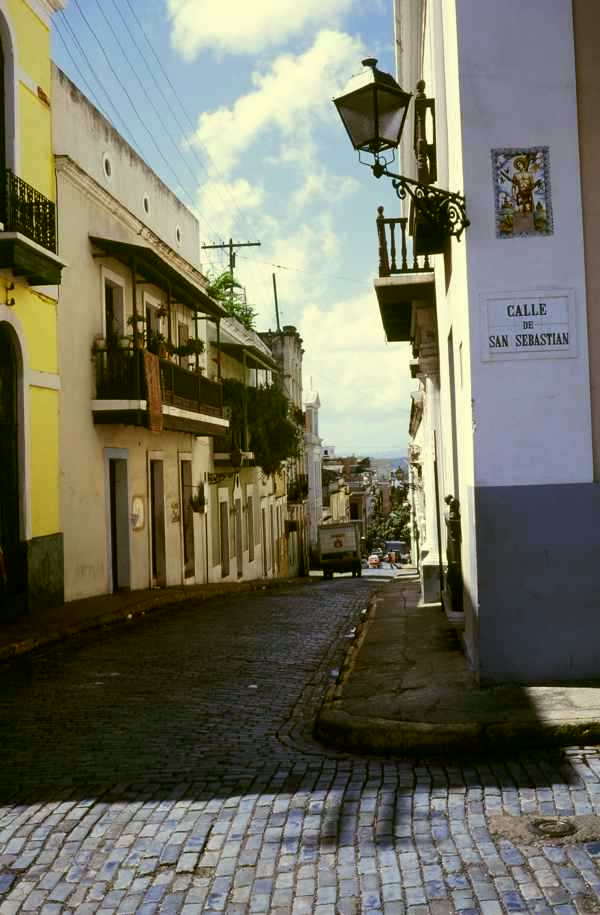
It seemed that nearly every building had these ceramic tiles.
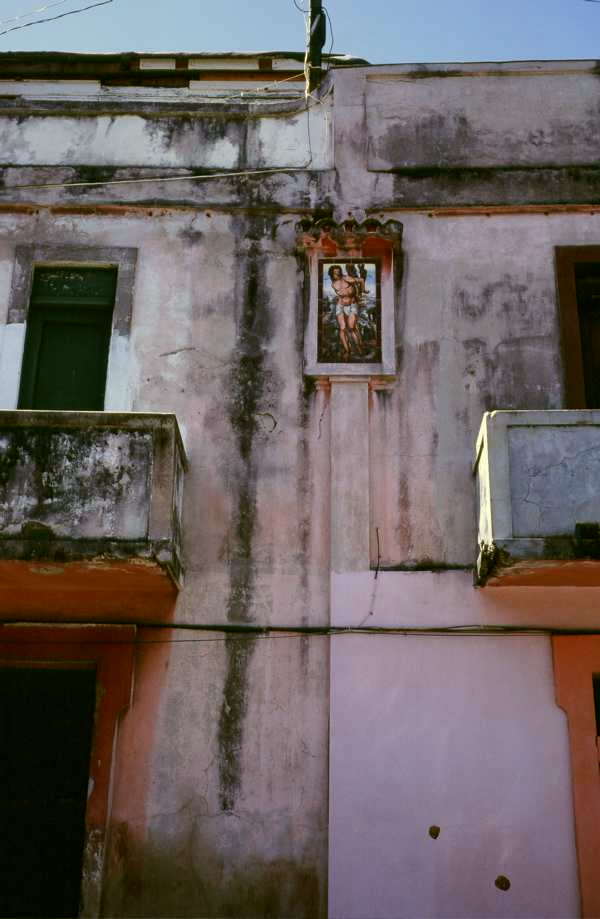

This is a typical Old San Juan street scene. Annamarie's father was named Sebastian so the name on the building tile caught her eye.

It seemed that nearly every building had these ceramic tiles.

An example of a residential district with lovely balconies.


Capilla del Cristo (Cristo Chapel) was built in 1753 and houses the work of one of Puerto Rico's most eminent painters, Jose Campeche y Jordan (1751-1809). Legend says that the chapel was built either to commemorate the death of someone who fell off the nearby cliffs or to prevent further mishaps.
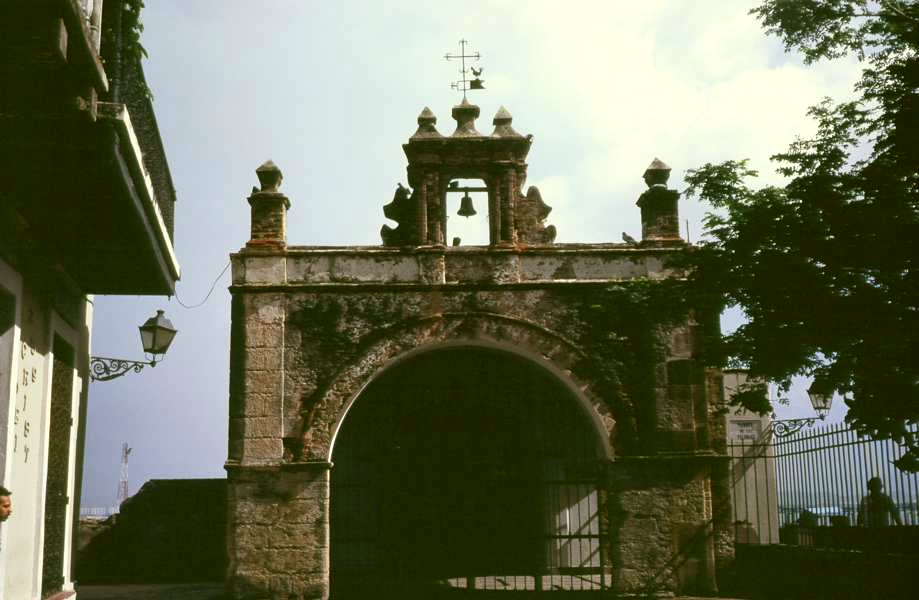
Annamarie, standing by La Muralla (city wall) below La Fortaleza, the Governor's Mansion.
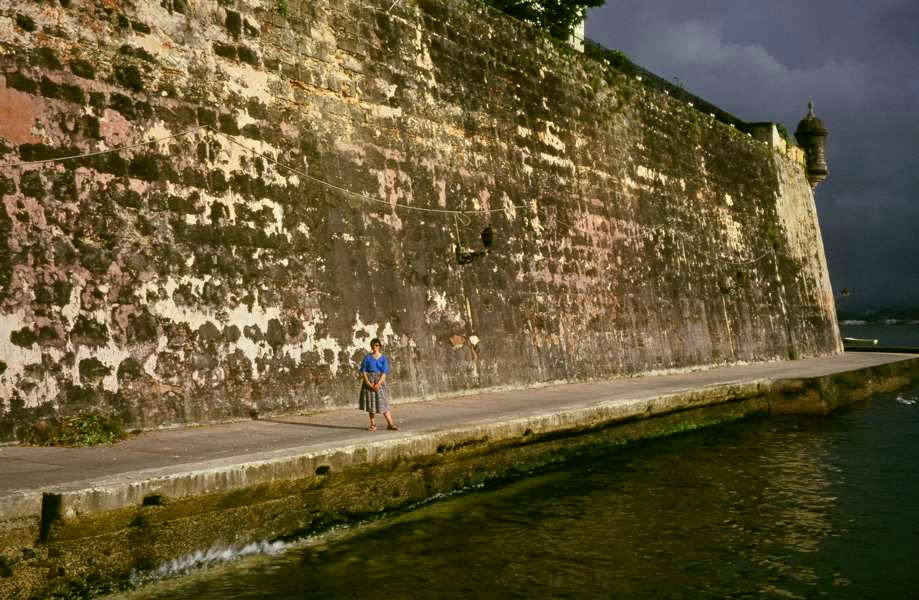

Annamarie, standing by La Muralla (city wall) below La Fortaleza, the Governor's Mansion.

La Muralla sentry post, made of sandstone blocks that are up to 20 feet, was built between 1539-1641 and completed in 1782.
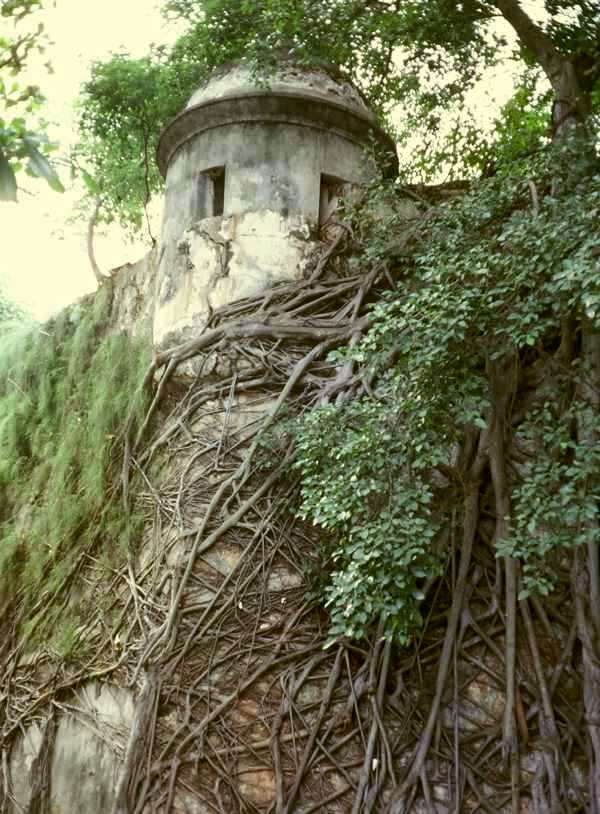

---------------- El Morro and El Yunque Rain Forest ----------------
Fuerte San Felipe del Morro, known as El Morro, is a National Historic Site. A massive fort 140 feet above sea level it protected the harbor of Old San Juan. Among its many attractions is a maze of secret tunnels and dungeons, plus a small museum with information on its history.
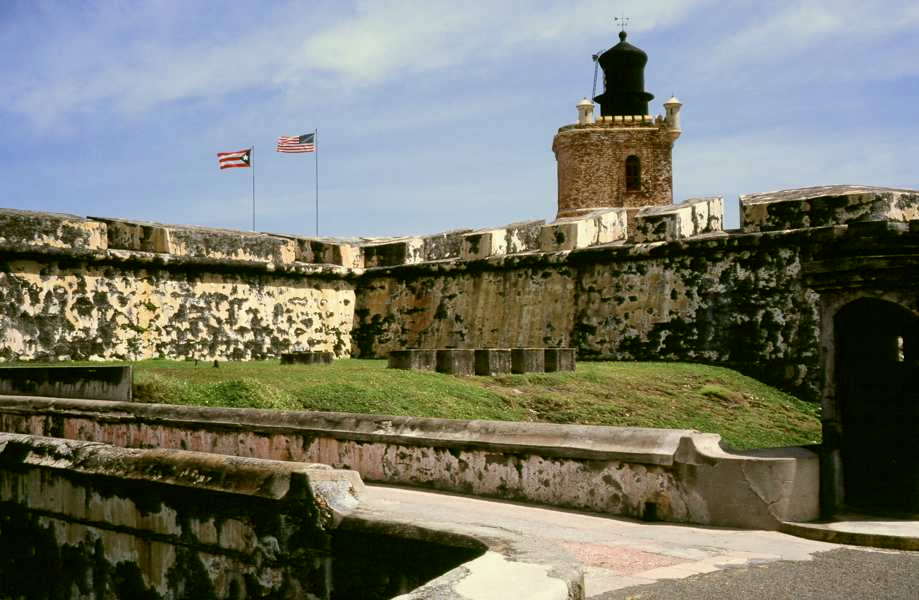
The gun swivel tracks make artful patterns in the surface stone.

Another view of the gun emplacements.

The fort went through several generations of gun replacements from smooth bore cannons to more modern ones. It held off the American Fleet in the days before airplanes. During WWII it was manned.
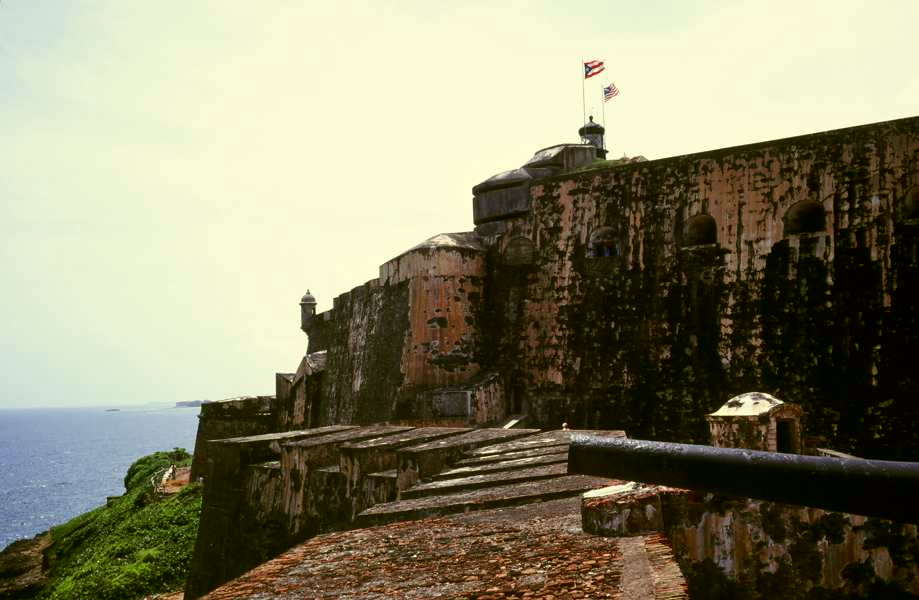

The gun swivel tracks make artful patterns in the surface stone.

Another view of the gun emplacements.

The fort went through several generations of gun replacements from smooth bore cannons to more modern ones. It held off the American Fleet in the days before airplanes. During WWII it was manned.

Our day trip to the interior of eastern Puerto Rico included a hike in El Yunque Rain Forest. Located in a cool, mountainous, semi tropical area it hosts a number of unique plant and animal species. Two examples are the endangered Puerto Rican Parrot and the tiny coquis or indigenous tree frogs.


This stonework acted as a spillway and was part of an elaborate water catchment system which provided fresh water.
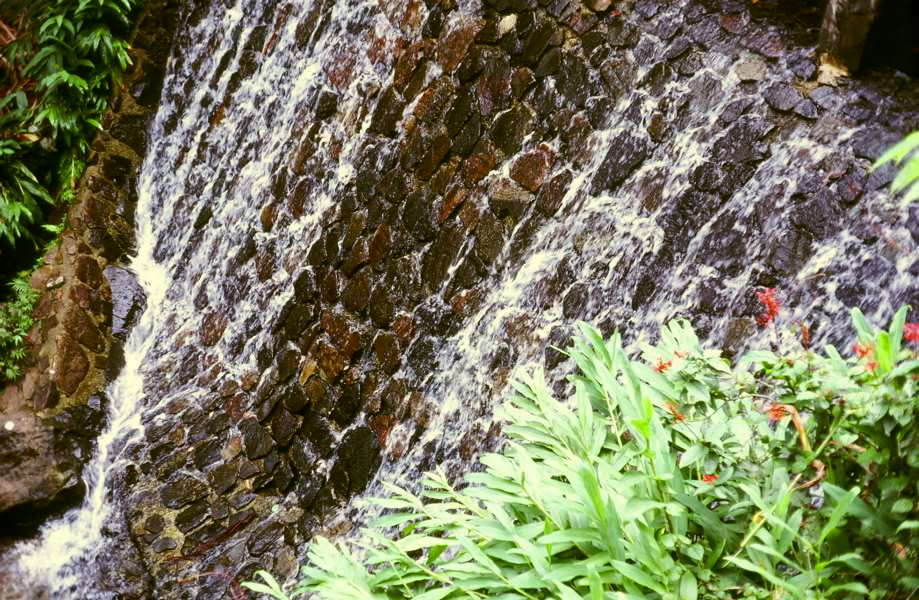

---------------- St. Thomas & St. John, USVI ----------------
Charlotte Amalie, the capital of the US Virgin Islands is located on St. Thomas, the largest of the group. It was named in 1692 after the Queen of Denmark and boasts one of the finest natural harbors in the Caribbean.
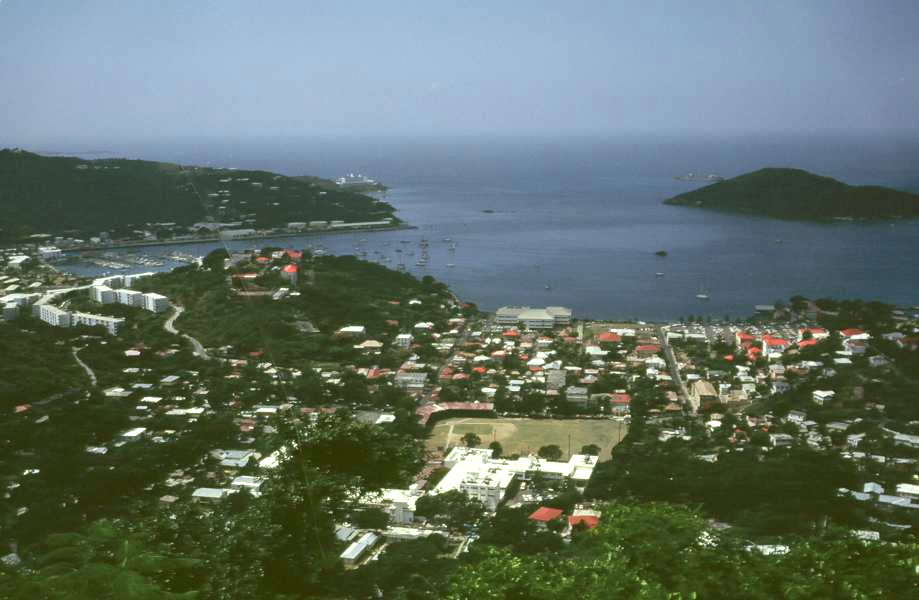
Bluebeard's Castle, the remains of Fort Trygborg, was built around 1679 and served as a watch tower. In order for the Danish soldiers to keep an eye out for enemy ships and protect Fort Christian from attacks it was constructed on a hillside. The name Bluebeard refers to Edward Teach, a pirate, who is said to have frequented the islands and he was known to spend quite a bit of time around the tower.Today it is a hotel complex as well as a National Historic Site and is considered to be one of the oldest buildings on St. Thomas.

The red roof of Bluebeard's Castle, visible from all over Charlotte Amalie, is a signature feature of this resort compound.
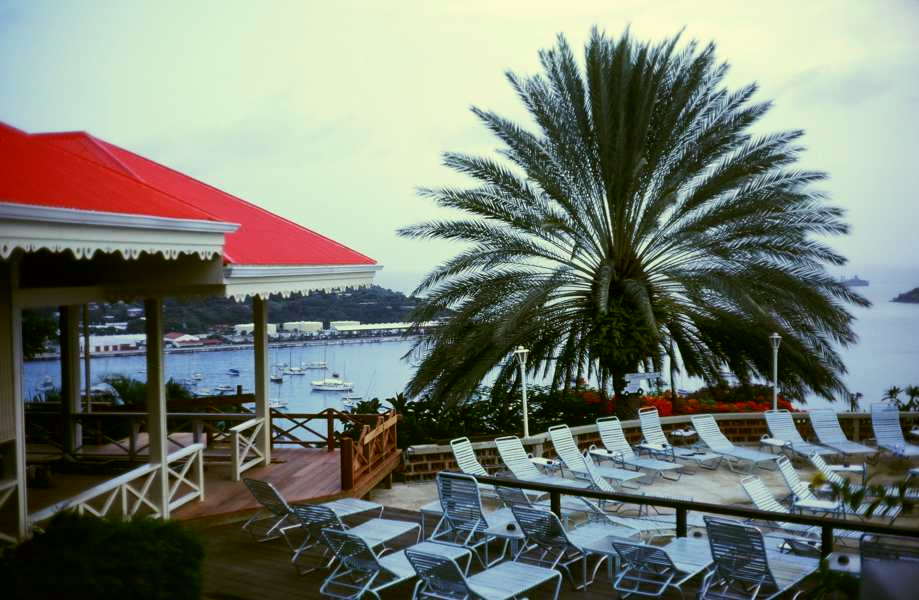

Bluebeard's Castle, the remains of Fort Trygborg, was built around 1679 and served as a watch tower. In order for the Danish soldiers to keep an eye out for enemy ships and protect Fort Christian from attacks it was constructed on a hillside. The name Bluebeard refers to Edward Teach, a pirate, who is said to have frequented the islands and he was known to spend quite a bit of time around the tower.Today it is a hotel complex as well as a National Historic Site and is considered to be one of the oldest buildings on St. Thomas.

The red roof of Bluebeard's Castle, visible from all over Charlotte Amalie, is a signature feature of this resort compound.

The 1829 Hotel was actually built in 1829 by Alexander Lavalette, a wealthy French sea merchant.At the time it was one of the largest homes in the Kongens Quarter (King's Quarter) of Charlotte Amalie. Now a hotel the dining room has its original floors, hand painted Moroccan glazed tiles, and a beautiful Tiffany stained glass window.
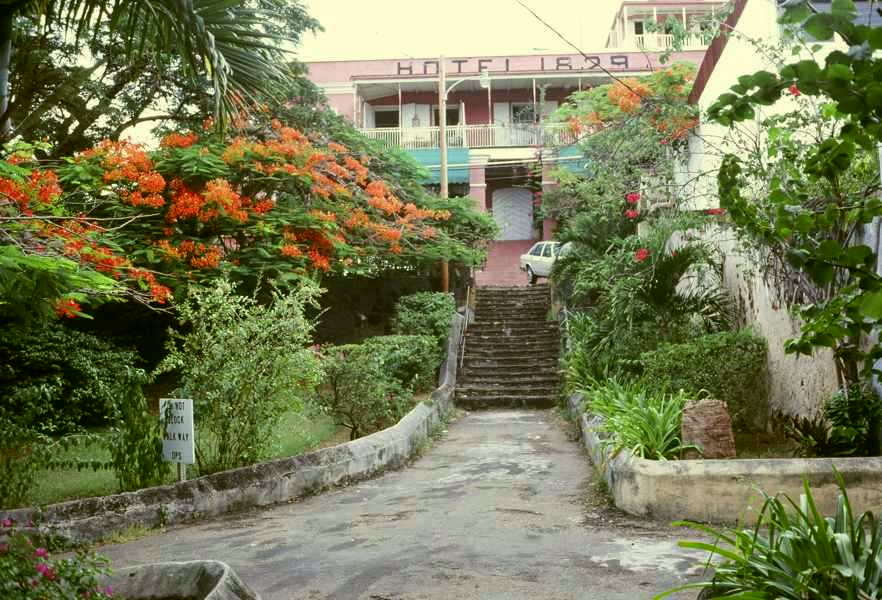

This young lady was happy to have her picture taken in front of the Post Office building.


---------------- Magens Bay, St. Thomas ----------------
Magens Point Resort, on the north side of the island, is known for its nearby white, sandy beaches.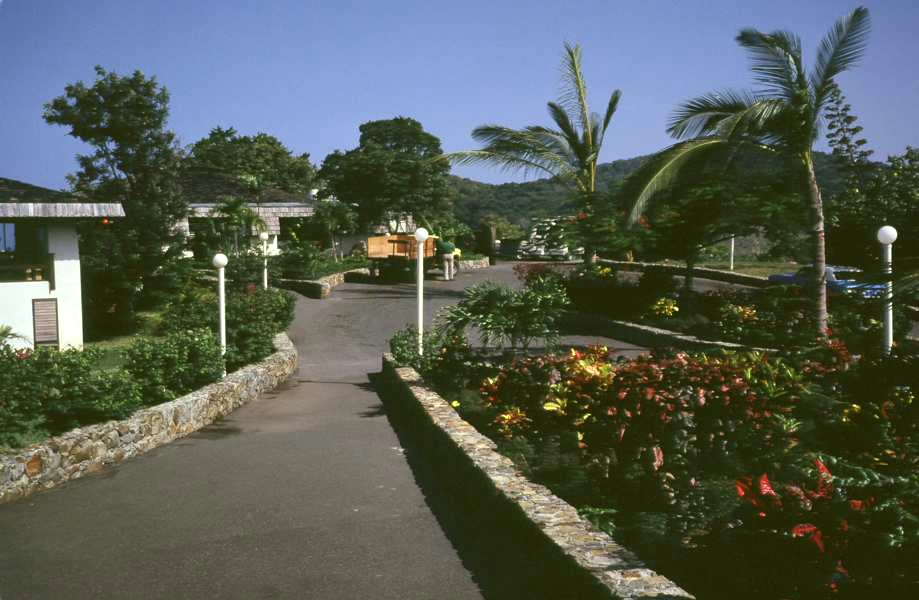
Overlooking Magens Bay from the hotel.

This tree made an interesting focal point.

The same view at sunset.
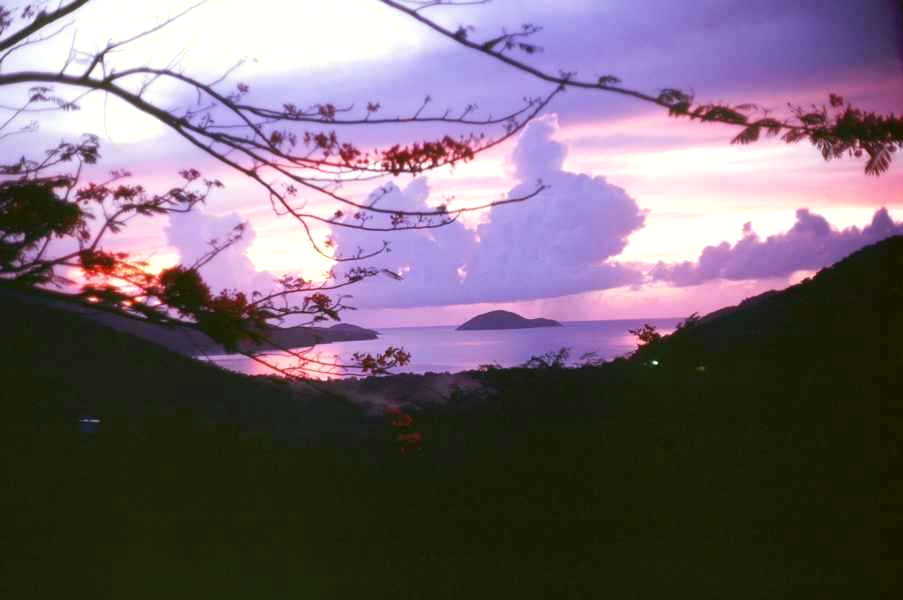
---------------- A side trip to St. John, USVI ----------------
The ferry to St. John leaves from Red Hook, St. Thomas, and docks in Cruz Bay. Nearly two-thirds of this island is part of the Virgin Islands National Park.
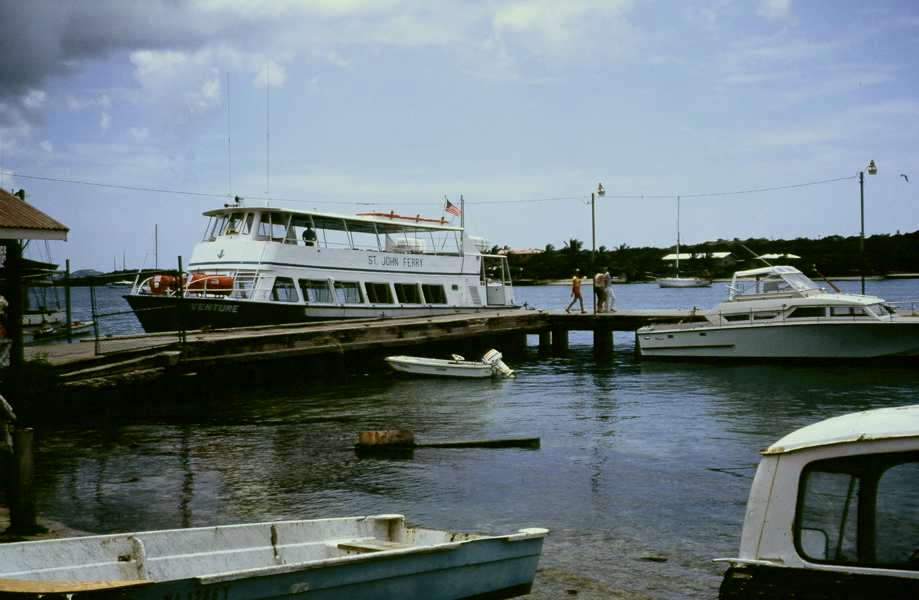
The view of Trunk Bay was quite nice. National Geographic rates St. John's Trunk Bay one of the most photogenic beaches in the world.
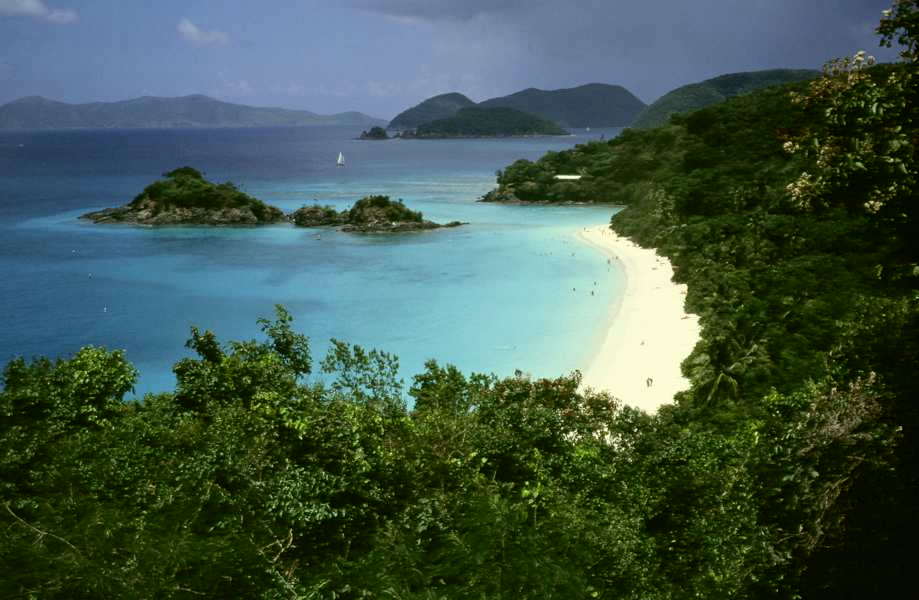
Annamarie at The Caneel Bay Resort.
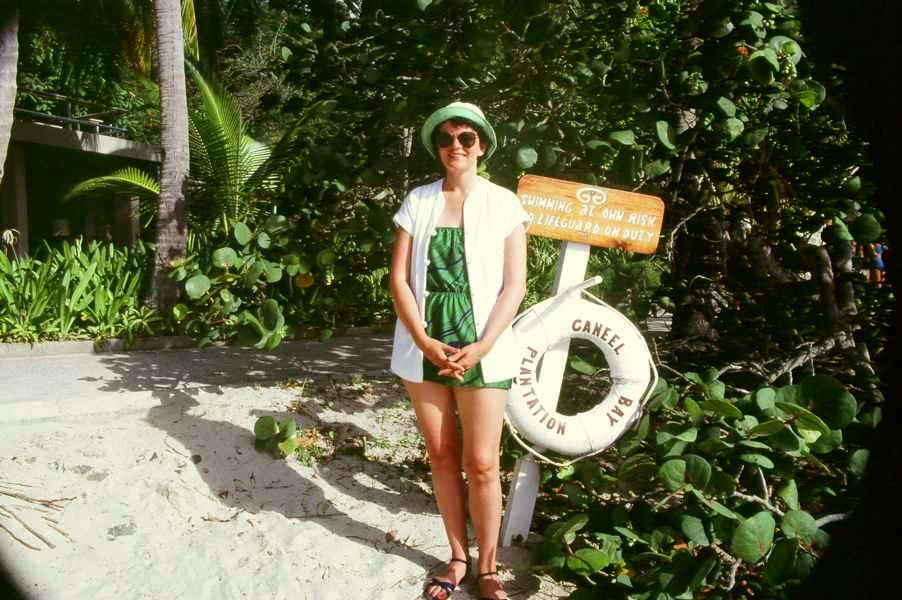
We took the island bus to this trail head where we explored the ruins of the eighteenth century Annaberg Sugar Plantation, considered to be one of the Virgin Island's finest remaining examples of the Danish Colonial Industrial Era.
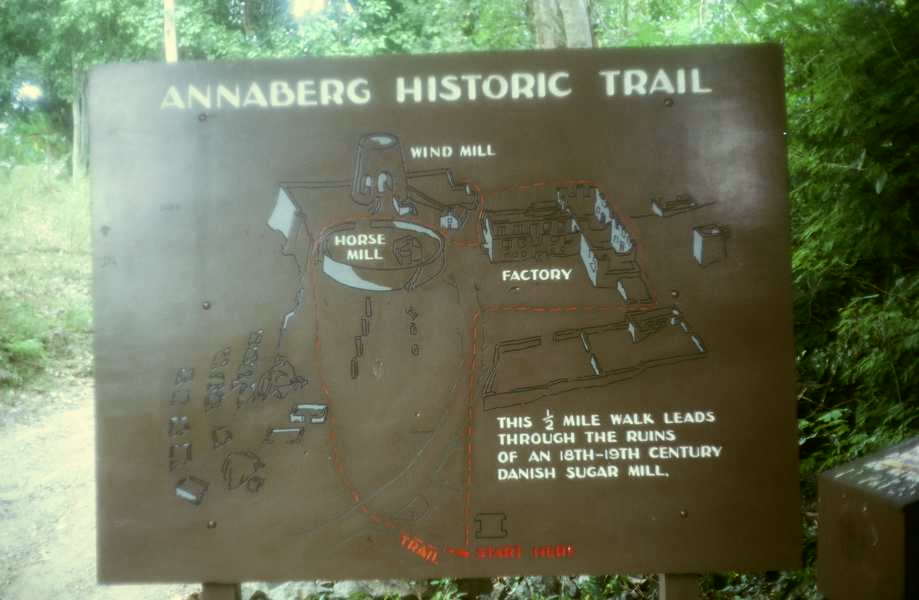

The view of Trunk Bay was quite nice. National Geographic rates St. John's Trunk Bay one of the most photogenic beaches in the world.

Annamarie at The Caneel Bay Resort.

We took the island bus to this trail head where we explored the ruins of the eighteenth century Annaberg Sugar Plantation, considered to be one of the Virgin Island's finest remaining examples of the Danish Colonial Industrial Era.

This tower housed the windmill, which provided power for grinding the cane.
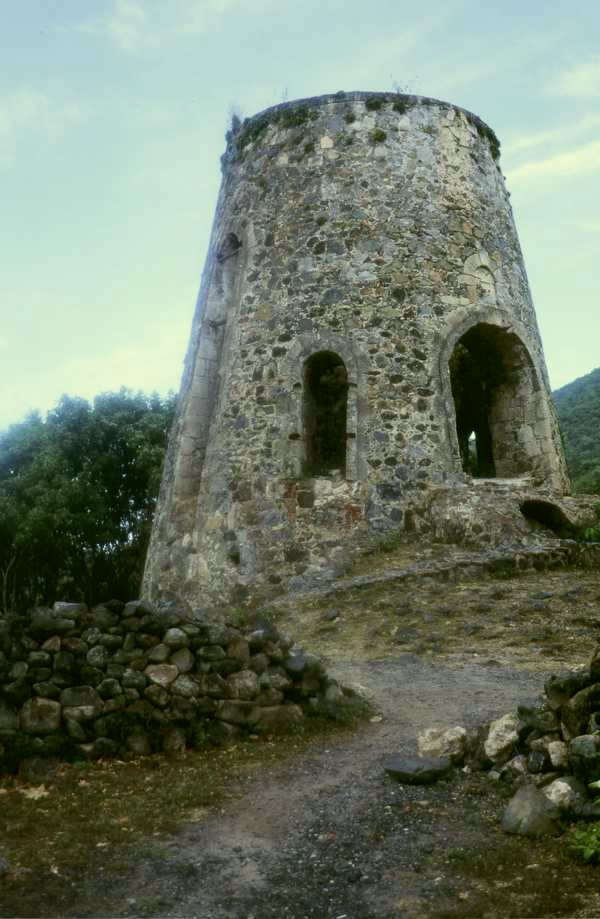
A detailed portion of the mill.

And a close up of the ruins.
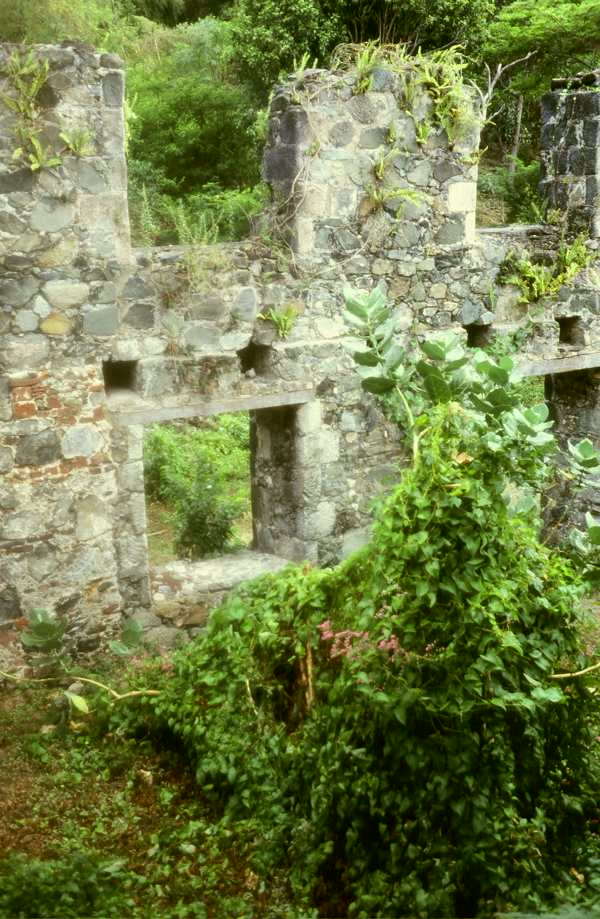

A detailed portion of the mill.

And a close up of the ruins.

The trails here were well marked and the views towards the water were magnificent.
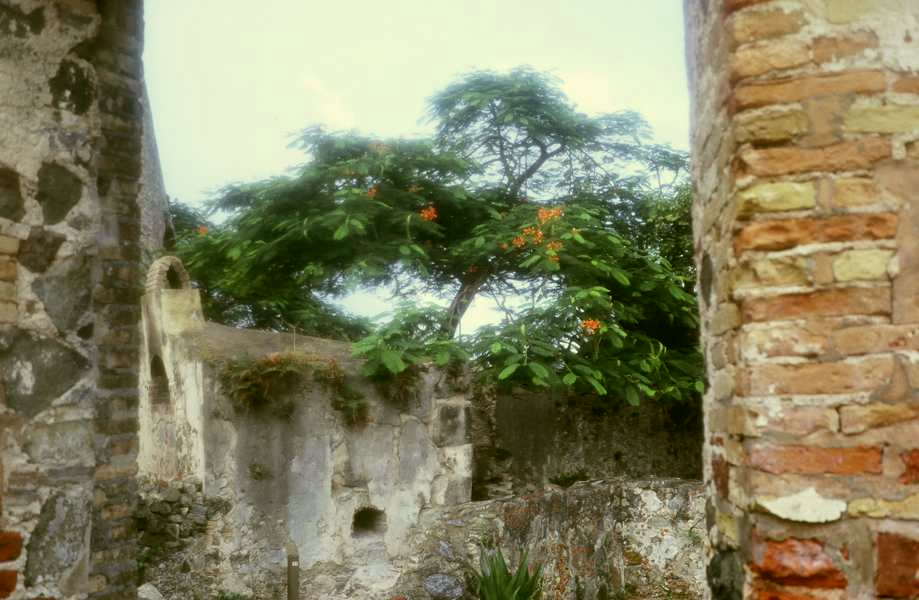
Before catching the bus back to Cruz Bay we stopped at Cinnamon Bay to change into dry clothes and have a bite to eat. Famous Trunk Bay Beach behind this building is the park's longest stretch of beach.
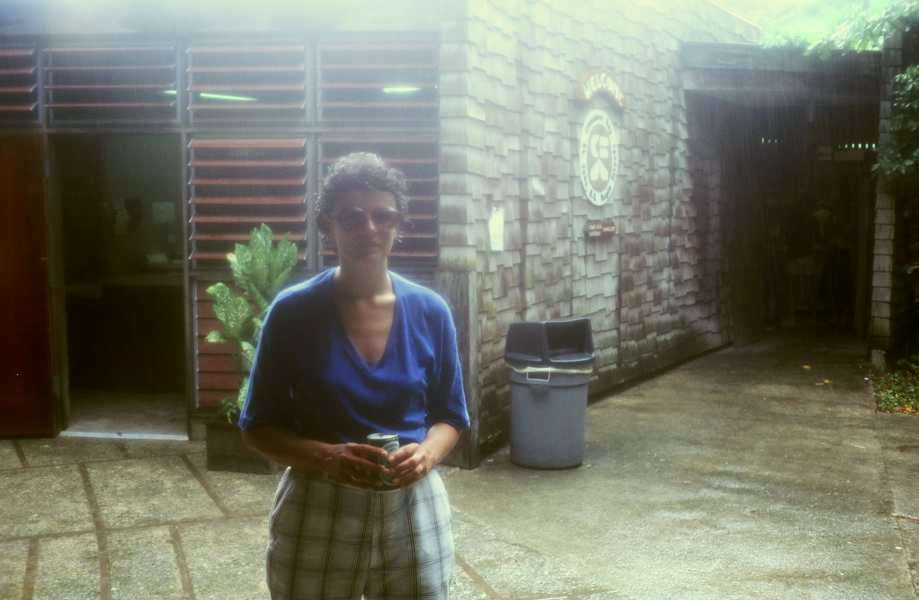

Before catching the bus back to Cruz Bay we stopped at Cinnamon Bay to change into dry clothes and have a bite to eat. Famous Trunk Bay Beach behind this building is the park's longest stretch of beach.

---------------- The Flight to The British Virgin Islands ----------------
The Charlotte Amalie Airport was small and quaint in 1979.
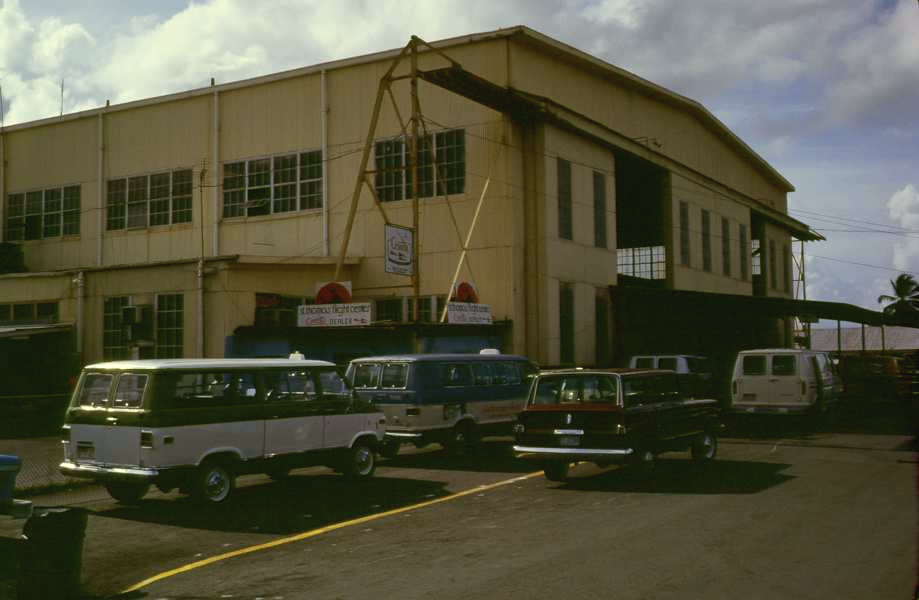
We boarded a ten seater plane owned by tiny Flamenco Airways.
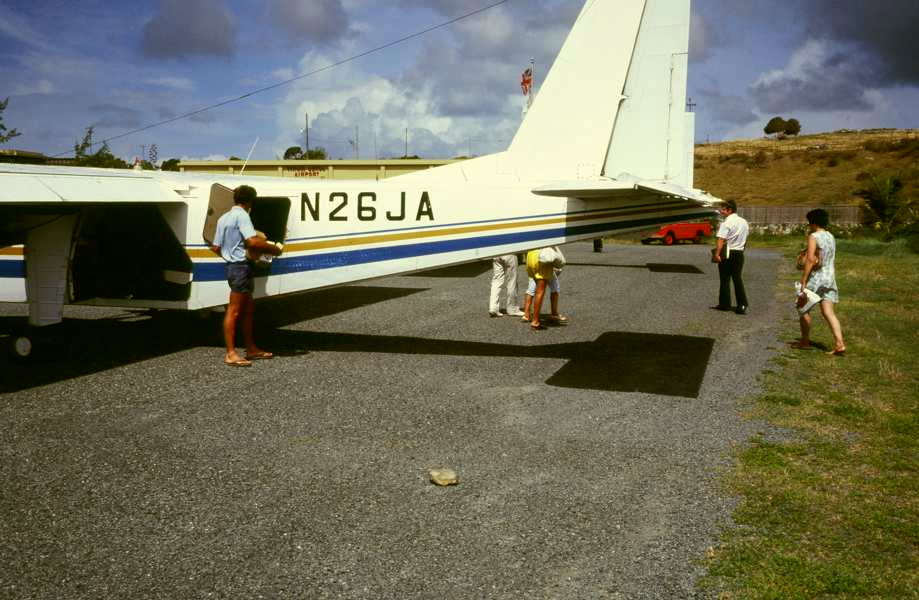

We boarded a ten seater plane owned by tiny Flamenco Airways.

This was a two engine, fixed wing plane with just 6 of us on board. One of the passengers agreed to serve as the co-pilot!
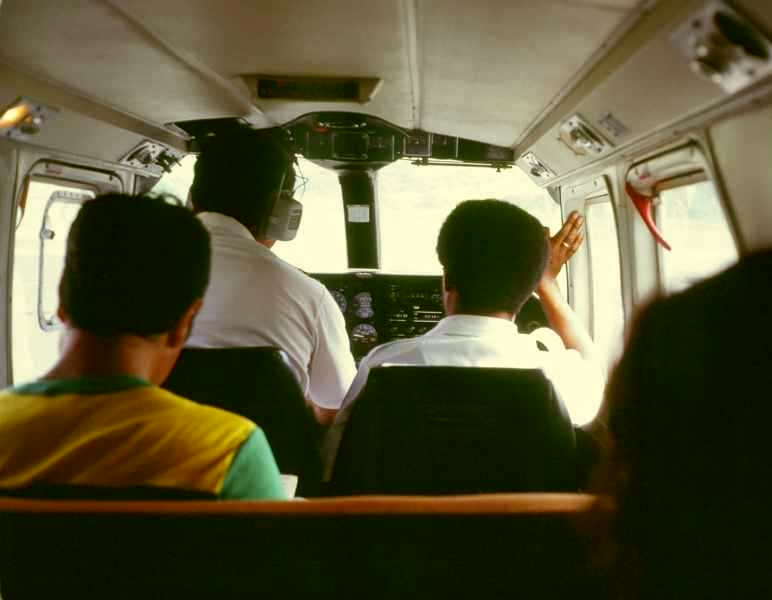

Saying good bye to St. Thomas, we were on a short thirty minute flight to Virgin Gorda, British Virgin Islands, our final stop on this vacation.


---------------- Little Dix Bay ----------------
At the tiny air strip near Spanish Town we were greeted by The Little Dix Bay Resort staff and driven to the hotel.
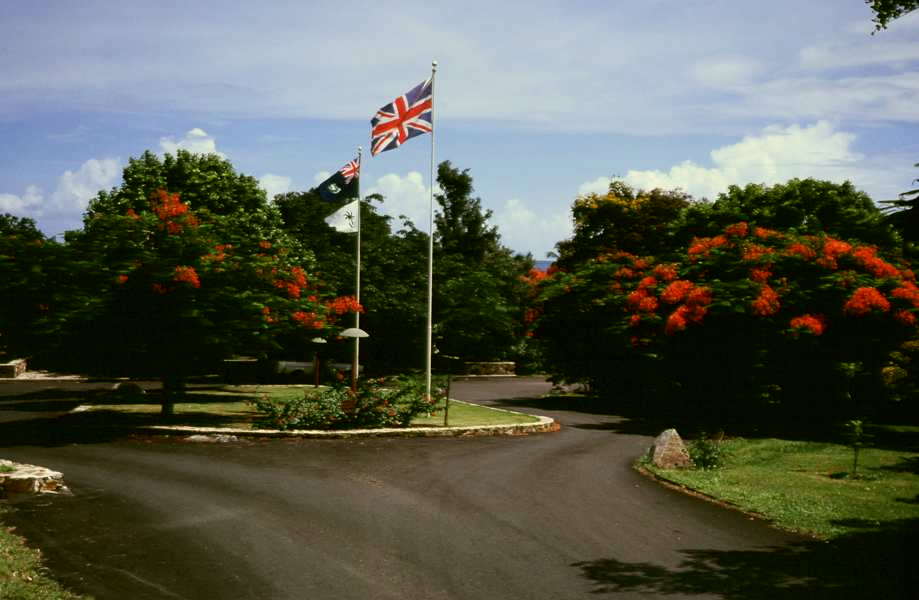
We thought this stone work was unique.
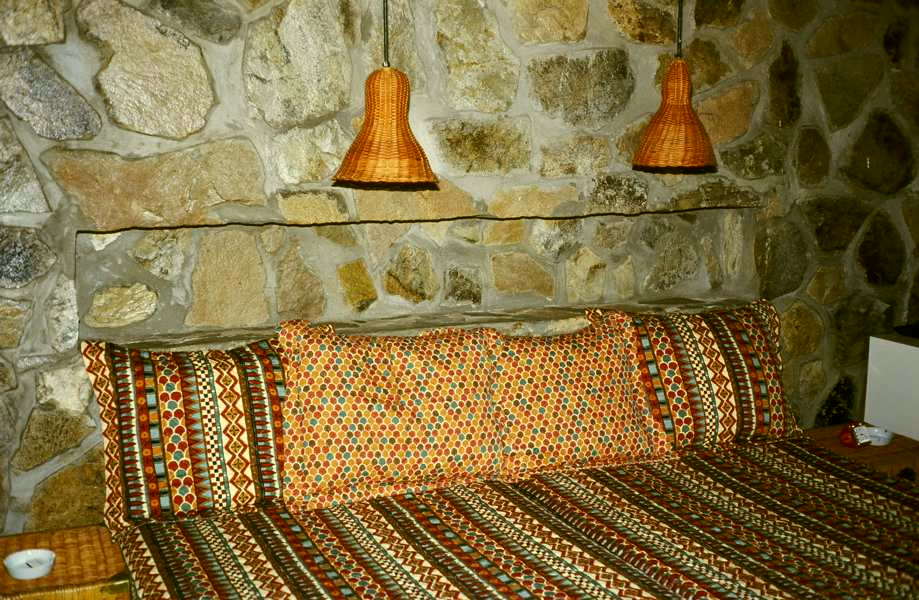
Annamarie, relaxes and catches up on her reading.

We loved the view from our balcony.


We thought this stone work was unique.

Annamarie, relaxes and catches up on her reading.

We loved the view from our balcony.

The grounds were stunning.
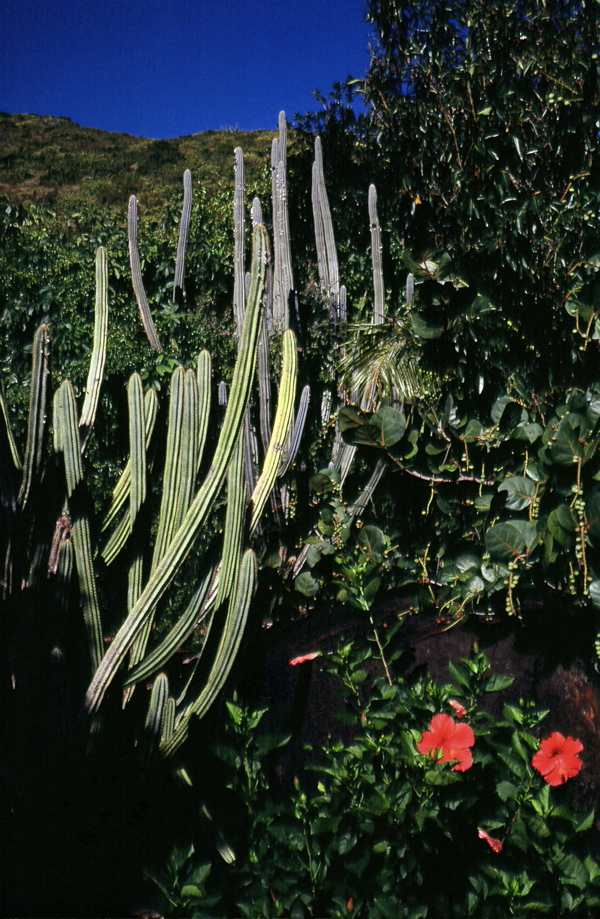

The beach was superb, with white sand and crystal clear water.
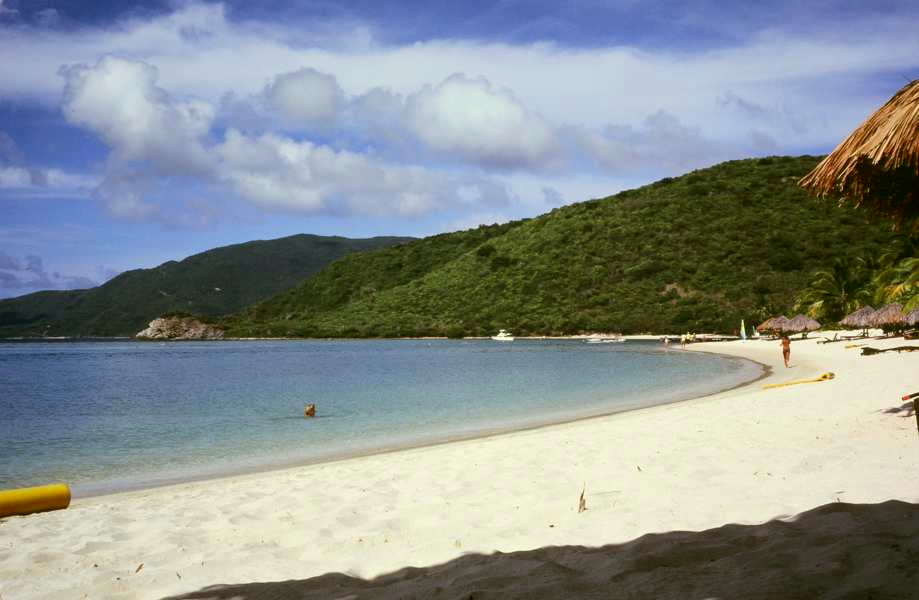
Annamarie soaks up some sun while Al sailed a Sunfish around the bay. The water temperature was always perfect.
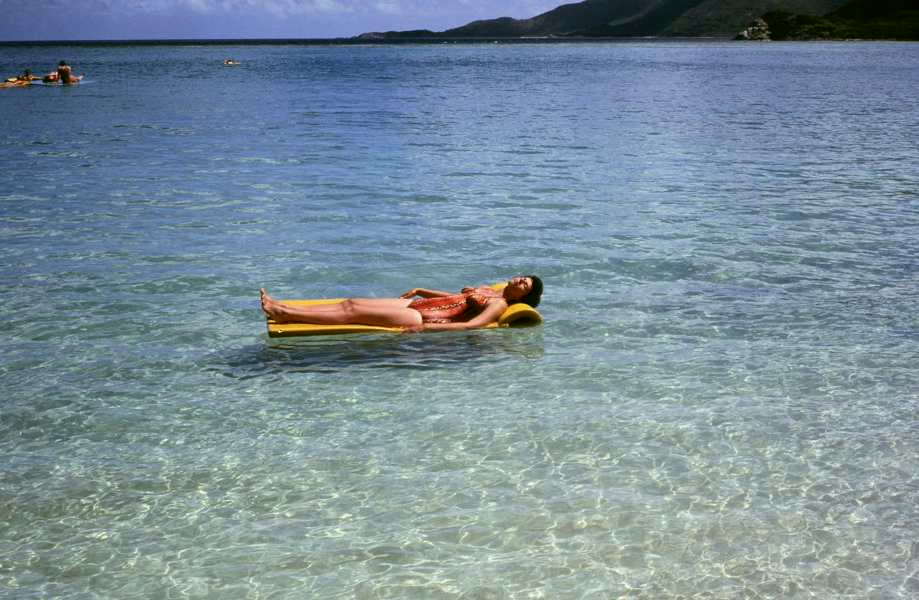
We took a hotel shuttle to the Baths, an area of giant boulders scattered about the beach.

Since the only access here was by boat we had a lot of privacy.


Annamarie soaks up some sun while Al sailed a Sunfish around the bay. The water temperature was always perfect.

We took a hotel shuttle to the Baths, an area of giant boulders scattered about the beach.

Since the only access here was by boat we had a lot of privacy.

The large boulders made an interesting setting.


As lunch time approached food for a buffet lunch, plus musicians, arrived by boat, courtesy of our hotel.
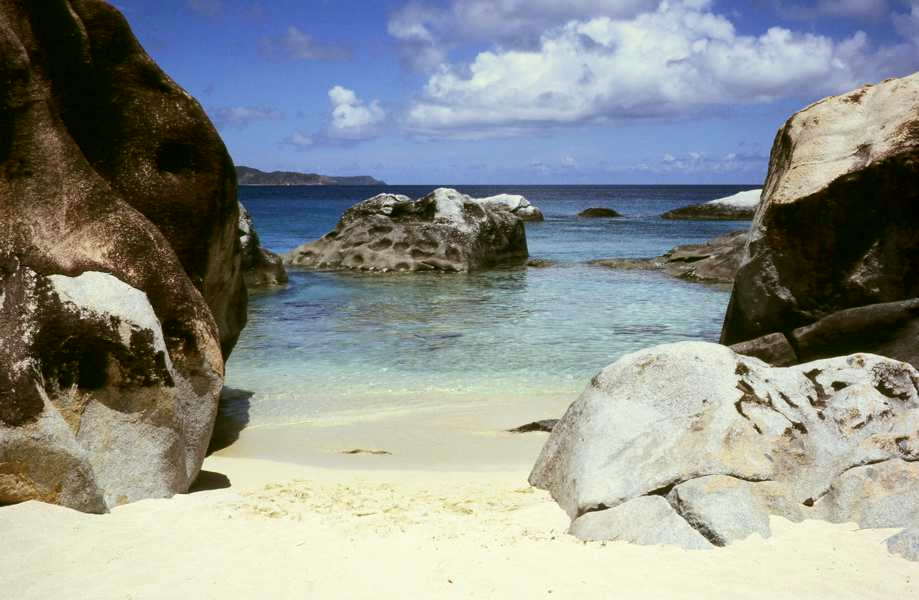

Annamarie and Al find some shade.
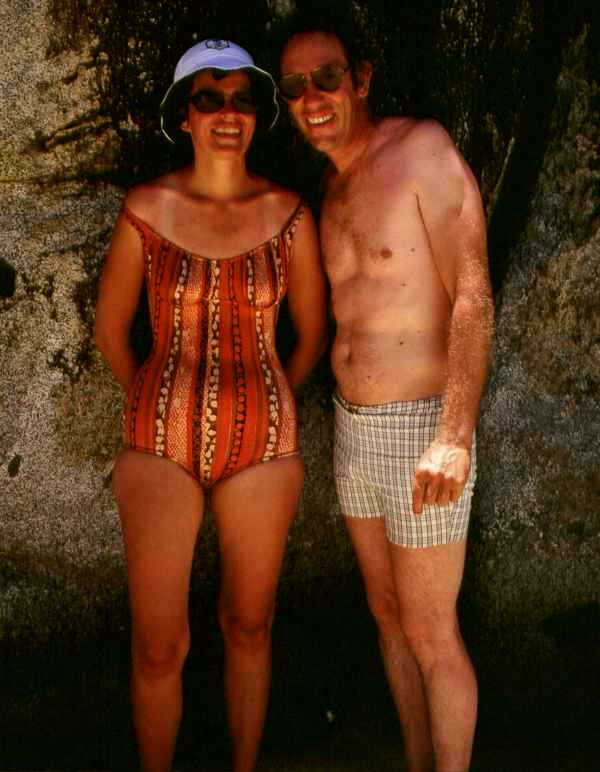

Each evening we were entertained by this wonderful steel band.

Index
